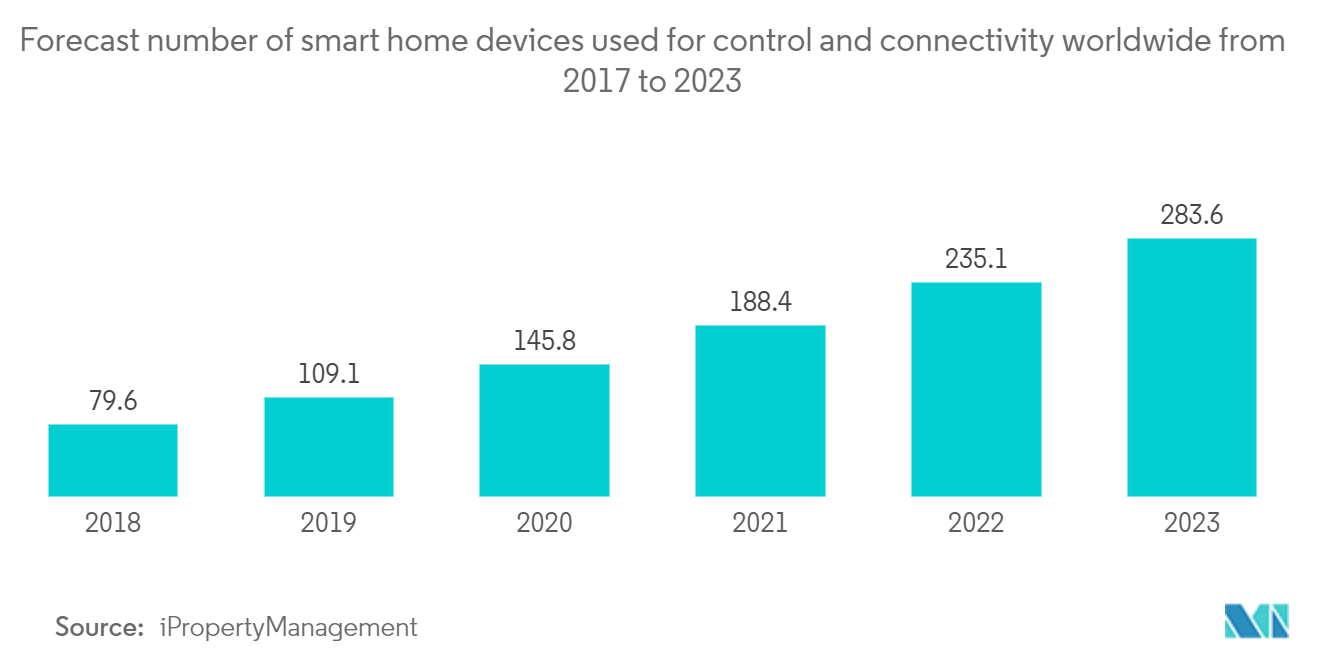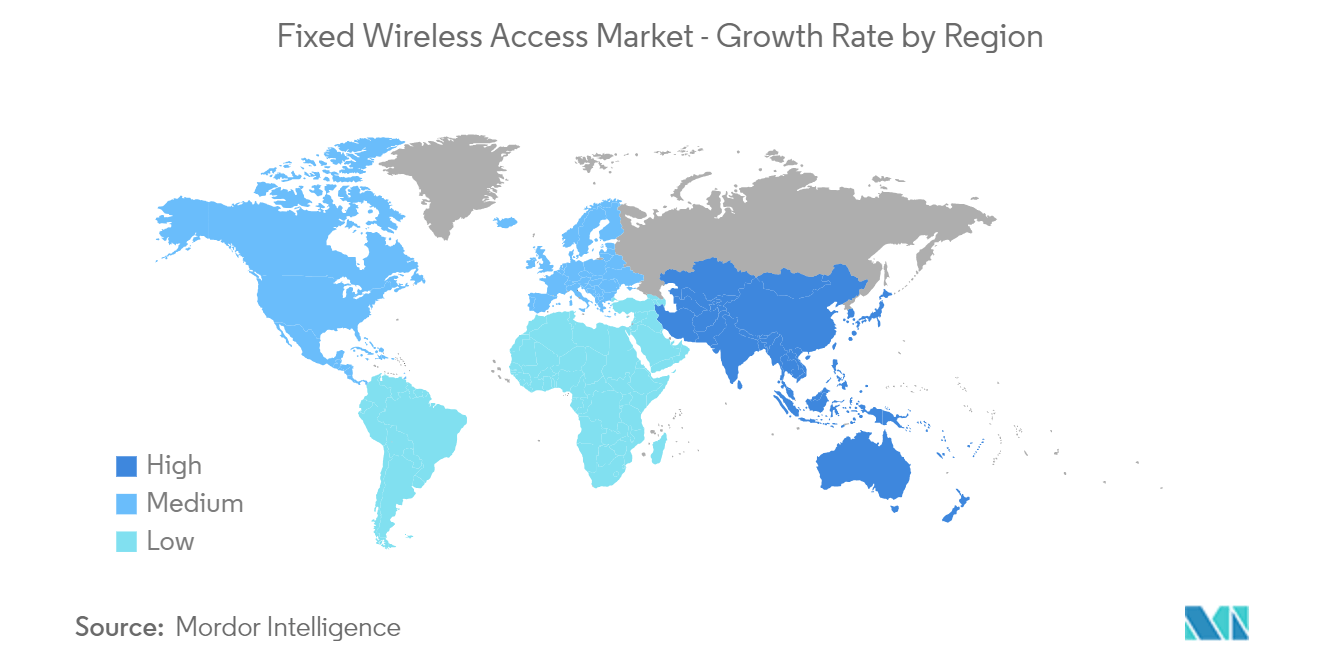Market Trends of Fixed Wireless Access Industry
Residential Segment Expected to Depict the Maximum Application
- The household application segment is expected to depict the maximum adoption due to growing broadband connectivity in households or for individuals. Fix6ed Wireless Access, or FWA, provides home internet access using wireless mobile network technology rather than fixed lines. Due to the increasing internet and mobile penetration amongst users, the need for a continuous source of data and the internet has been increasing over the years.
- 5G fixed wireless access is an ideal alternative for residential customers as users get speeds at a competitive price with no installation issues. Also, building fixed broadband infrastructure in many developing countries is not economically viable.
- According to Cisco's latest Visual Networking Index Report, smart homes are expected to be one of the primary drivers for the growth of IoT connectivity during the next few years. The company expects around 50% of the 28.5 billion device connections predicted by this year to be IoT/machine-to-machine (M2M).
- Moreover, major companies are introducing their services to expand their reach to customers, especially for households or individual users. For instance, in June last year, Nokia and Ooredoo introduced super-fast and reliable 4G and 5G fixed wireless (FWA) access throughout Oman. The scope of work would initially witness 15,000 businesses and homes connected. In addition, 3,000 homes in city centers would get Nokia FastMile 5G FWA.
- As per property management, the total number of smart home IoT (Internet of Things) devices utilized for control and connectivity purposes was anticipated to rise in the upcoming year. Nearly 284 million devices are predicted to be in use by the end of the following year. Hence, with the rise in the overall smart home IoT (Internet of Things) devices, the market is expected to witness various lucrative growth opportunities throughout the forecast period.

North America to Dominate the Market
- North America is expected to hold the most significant global fixed wireless access market share during the forecast period. In the United States, the demand for high-speed internet connections is increasing rapidly, owing to which companies are rigorously investing in fixed wireless connections. Deploying fixed wireless connections not only offers high-speed internet but also helps users in unserved areas to avail of the service.
- Small cells used in fixed wireless solutions are deployed close to end-users; therefore, they have natural advantages in the Internet of Things. Extensive small cell deployments connect devices to communication networks, helping operators build a successful Internet of Things.
- North America witnessed a significant increase in interest and investment in fixed wireless broadband technology in the last two years. Though approximately 30% of US households in remote and rural communities still lack access to a high-speed broadband connection, fixed wireless broadband is emerging as a key technology to bridge this gap. About 2,000 wireless internet service providers currently provide fixed wireless broadband services to more than 4 million residences in small towns and rural communities in all 50 US states.
- Integrating Wi-Fi with small cells can offer cost-effective capacity and additional coverage for seamless data services. Benefits from such integration may eventually lead to increases in revenue and savings in the total cost of ownership (TCO).
- Moreover, various market players are well involved in launching multiple 5G offerings as a part of their crucial growth strategy. For instance, in January 2023, T-Mobile US announced its collaboration with Cisco to launch a scalable and distributed nationwide cloud native converged core gateway. The new converged core gateway also simplifies operations for T-Mobile, allowing the Un-carrier to shift resources with better agility and roll out services like 5G home internet.


